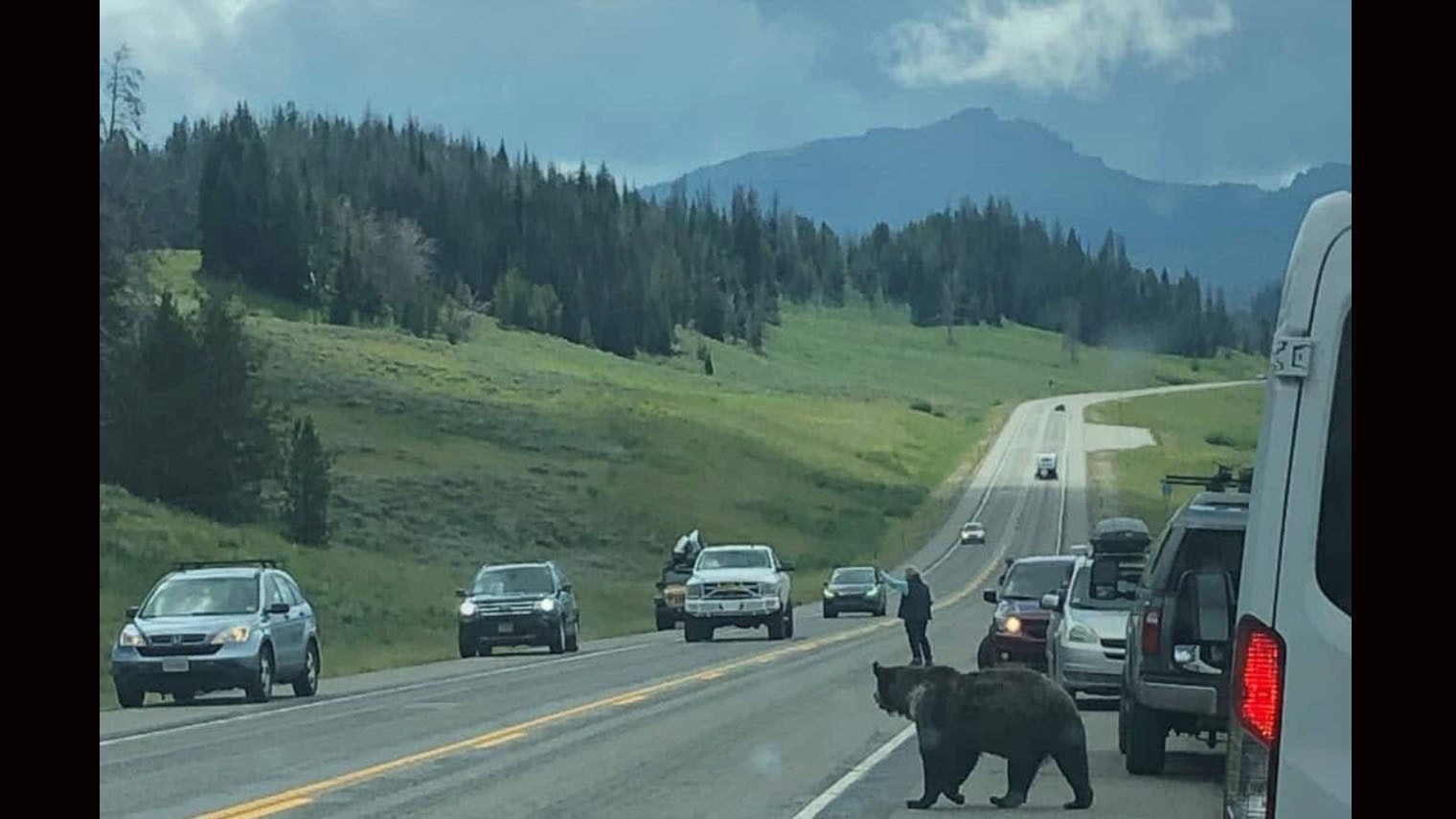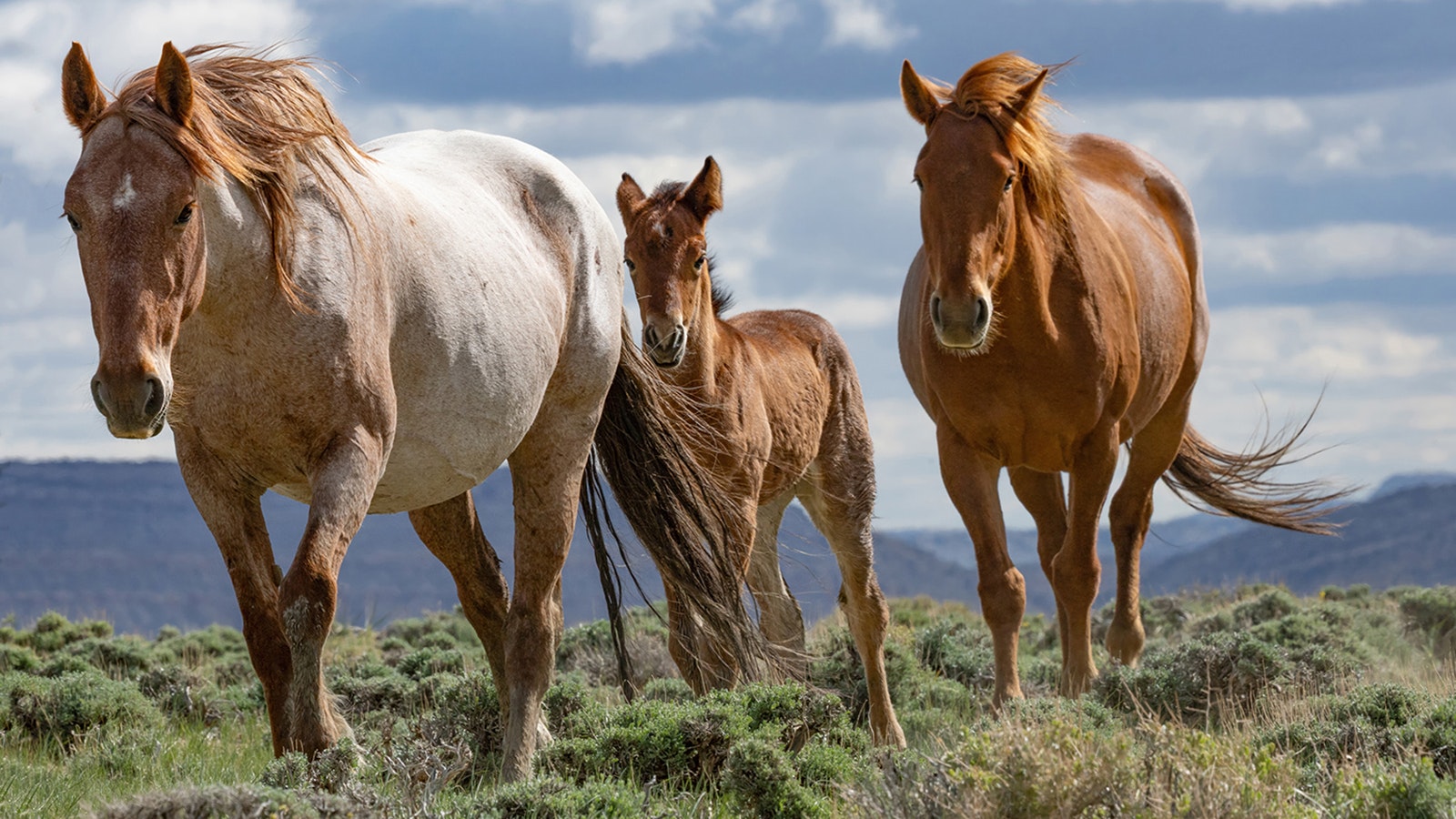As a result of continued harassment by wildlife viewers creating unsafe conditions on Togwotee Pass in Wyoming, the U.S. Fish and Wildlife Service (Service) and partners plan to conduct targeted hazing operations on grizzly bear 863.
The Service and partners ask the public to avoid the area if possible and not interfere with these management operations, currently planned for the remainder of June 2021. Allowing wildlife experts to address this issue uninterrupted will increase the chances of this management tactic being successful.
People and cars dangerously close to a grizzly bear on U.S. Highway 26/287, creating unsafe conditions for people and wildlife. Credit: Todd Stiles/U.S. Forest Service
This operation will be conducted alongside partners at the U.S. Forest Service, Yellowstone National Park, Grand Teton National Park, Wyoming Highway Patrol, and Wyoming Game & Fish Department.
Approaching, disturbing, or feeding bears – as is occurring on Togwotee Pass – is extremely dangerous to both humans and bears.
These actions habituate animals to human development and can lead to dangerous human conditioned behavior. When this happens, bears may become aggressive and threaten human safety.
If hazing does not resolve conflicts on Togwotee Pass, escalating management options include relocation and possibly euthanasia. By avoiding approaching or feeding bears, the public can help ensure that the need for such significant management options is unnecessary.
A female grizzly bear, known as “863” by wildlife managers and “Felicia” by public observers, and her two cubs have become habituated to the roadside along Highway 26/287.
As more people become aware of these bears and stop to approach them, it creates unsafe conditions for people and wildlife. The public’s help is needed to ensure the continued safety of these bears and people passing through the area.
The Service and our partners continue to raise calls to the public to stay safe and help keep grizzly bears wild (see: USFWS and Partners Urge Responsible Grizzly Bear Viewing in Togwotee Pass Area, As Grizzly Bears Emerge from Dens, USFWS Urges Public to Stay Safe and Keep Bears Wild, and Multi-agency Effort to Maintain Safety of Grizzly Bears and People).
The Service again reminds residents and visitors that approaching, feeding, or otherwise disturbing grizzly bears poses a significant threat to humans and bears, in addition to being a federal offense under the Endangered Species Act.
The U.S. Fish and Wildlife Service, U.S. Forest Service, National Park Service, Wyoming Highway Patrol, Wyoming Game & Fish Department, and other partners are unified in our approach and committed to ensuring safe conditions for people and wildlife. To achieve this goal, we need your help. Please remember to:
Never approach bears; always remain at least 100 yards (300 feet) away, or about the length of a football field
Practice ethical wildlife viewing by remaining a safe distance and never disturbing natural behaviors – if an animal notices you and/or changes their behavior or actions, you are too close
Never feed, leave food for, or make food accessible to bears
Obey traffic signs, laws, and regulations – stop only in designated pull-off areas
Follow the direction of wildlife management officials, do not interfere with or approach hazing operations
Additional grizzly bear safety information is available from the Interagency Grizzly Bear Committee for residents, hunters, hikers/campers, farmers/ranchers, and wildlife watchers.





